Magnamed Oxymag Ventilator is a pulmonary ventilator that thinks as fast as an emergency team. It is lightweight, flexible and simple, compact, and durable, which makes it ideal for emergency transportation.
One Ventilator for all your needs: Can be used for ICU & Transport applications for Neonatal, Paediatric, and Adult patients.
Magnamed Oxymag Ventilator Features
- Suitable for Neonatal, Pediatric and
- Application in Emergency, ICU as well as
- Works on Venturi
- Modes: VCV/VCV-AC, PCV/PCV-AC, PLV- AC, V-SIMV+PS, P-SIMV +PS, Dual PAP/APRV, CPAP/PSV: NIV
- Light Weight : 3 Kg
- Proximal Sensing for faster
- 6 hours of battery back-
- Measurement of Capnography (EtCO2) or Oximetry(SpO2) with Masimo (Optional).
- Ventilation with only single gas,
- No Bleed of Reduced Oxygen Wastage.
- 7-inch Touch Screen Display with a user-friendly interface.
- Graphs and Loops for better
- Can be connected to an external
- Invasive & Non-Invasive
- Can be easily mounted in Air or Road Ambulance Trolley.
- Low Cost of Operation and
- Can also be used for low flow of Oxygen
- Intelligent Alarm
Technical Specifications
USER INTERFACE
- Type and Size TFT-LCD touchscreen 5.7″
- Weight 3,0 kg (6.6 lbs)
- Dimensions W x H x D 254 x 230 x 185mm (10 x 9.0 x 17.3 inch)
- Communication/Interface RS-232C ports
OPERATING CONDITIONS SPECIFICATIONS
- Electrical power supply 100 to 240 V, 50/60 Hz
- 12 VDC external yes
- Battery 6.5 hours
- O2 inlet 39 to 87 psi (270 to 600 kPa) Standard connection available DISS (optional NIST)
- Temperature -18 to 50˚C (0 to 122˚F)
- Barometric pressure 600 to 1.100 cmH2O (or hPa or mbar)
- Relative humidity 15 to 95%
PARAMETER ADJUSTMENTS
- Type of patient Adult, Pediatric and Neonatal
- Tidal volume 20 to 2500ml (Measured 2ml in Neonate with PLV)
- Respiratory rate 0 to 150 bpm
- Inspiratory flow 0 to 150 l/min
- Rise time 0 to 2.0 s
- Inspiratory time 0.1 to 10 s
- Inspiratory pressure 1 to 60 cmH2O (or hPa or mbar)
- Peep 0 to 40 cmH2O (or hPa or mbar) Support pressure /Dpsupp OFF, 5 to 60 cmH2O (or hPa or mbar) Flow cycling (% of peak flow) 5 to 80 %
- Trigger sensitivity (Pressure trigger) OFF; -0.2 to -10 cmH2O (or hPa or mbar) Trigger sensitivity (Flow trigger) OFF; 0.5 to 30 L/min
- I:E ratio 1:4 to 4:1
- O2 Concentration OFF; 35-100% (21% to 100% with External Blender) Type of inspiratory flow Constant, decelerating, accelerating & sine
MONITORING
- Curve PxT, FxT and VxT/ SpO2/ CO2
- Loops VxF, PxV
- Bargraph Instant Pressure
- FiO2 Galvanic cell
- Numerical value Volume inhaled and exhaled, FiO2, dynamic
- compliance, intrinsic PEEP, resistance, O2 pressure, O2
- consumption, EtCO2*, CO2*, SpO2**, heart rate**, perfusion index**
- * Using Capnography. ** Using Oximetry.
VENTILATION MODES
VCV / VCV – AC; PCV / PCV – AC; PLV – AC; V-SIMV + PS; P-SIMV + PS; DualPAP / APRV; CPAP / PSV; NIV
ALARMS
- Minute volume high / low
- Respiratory rate high / low
- Inspiratory pressure high / low
- Peep high / low
- Apnea time OFF, 5 to 60 s
- Automatic alarm settings OFF, 10%, 20% and 30%
GENERAL SPECIFICATIONS
- Stand by on/off
- Manual cycles yes
- Freeze yes
- Sigh yes
- Automatic barometric compensation yes
Optional
- Mobile base, wall support, transport system (bags), capnography and oximetry. DC / DC cable, Air and O2 blender
- Fastening and transport systems Emergency vehicles; Intensive care unit vehicles;
- Helicopters; Gurneys and hospital beds.

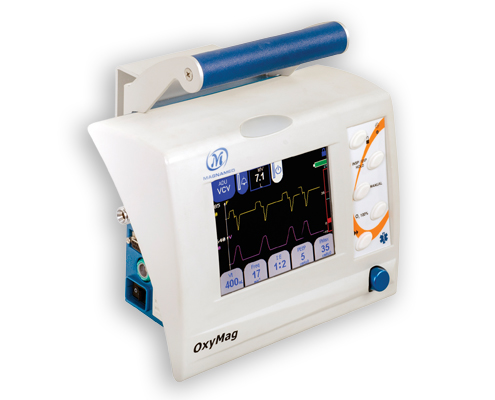
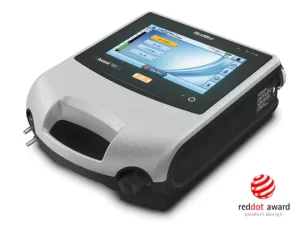
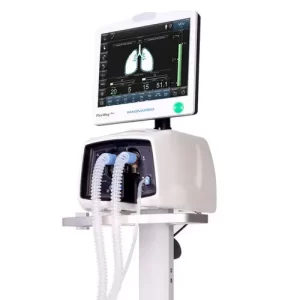
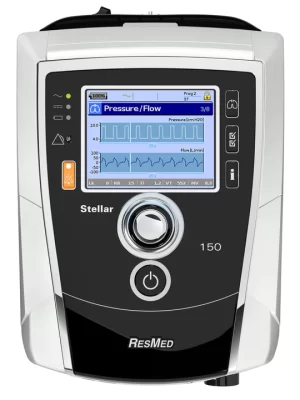

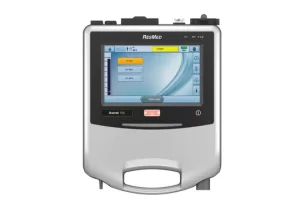
Reviews
There are no reviews yet.